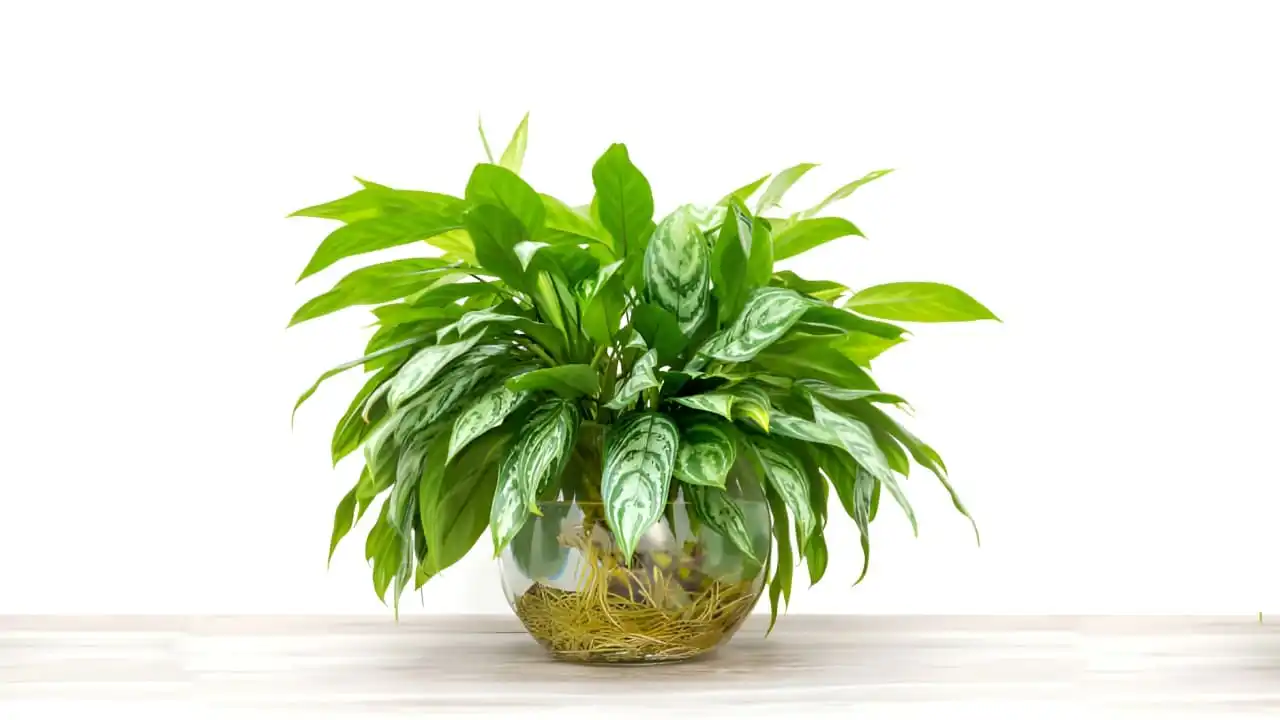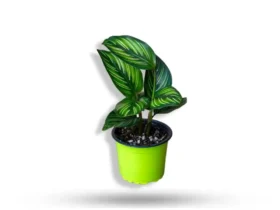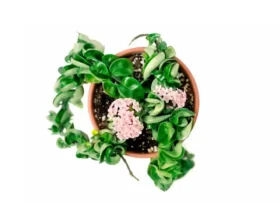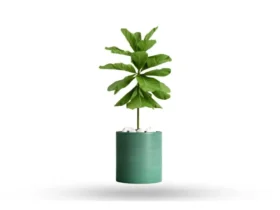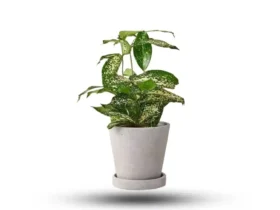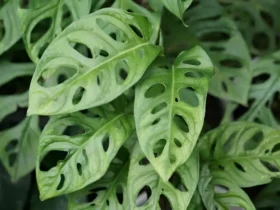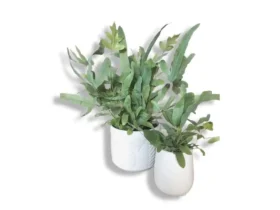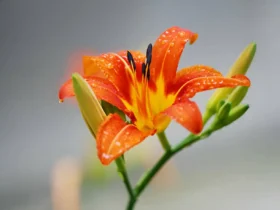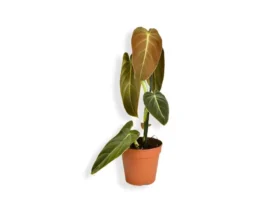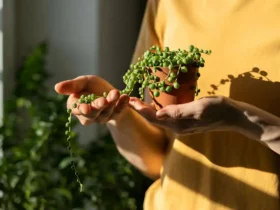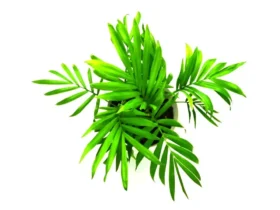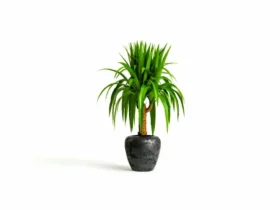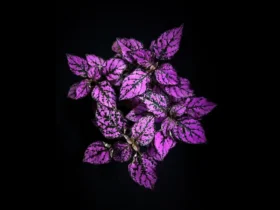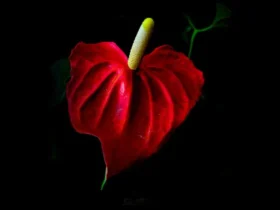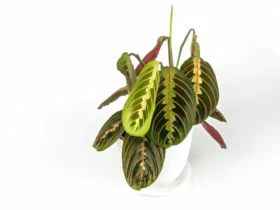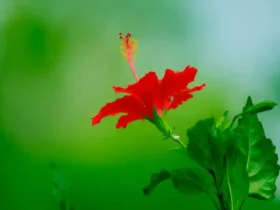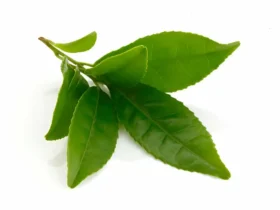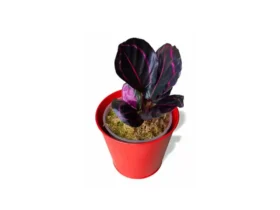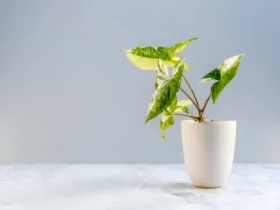Introduction
Chinese Evergreen, scientifically known as Aglaonema, is a popular indoor plant cherished for its lush green foliage and adaptability. Originating from tropical and subtropical regions of Asia, these plants have become a favorite among plant enthusiasts due to their resilience and beauty.
Quick Overview
| Common Name | Chinese Evergreen, Philippine Evergreen, Poison Dart Plant |
| Scientific Name | Aglaonema Commutatum |
| Sun Exposure | Partial, Full |
| Soil Type | Well-Drained |
| Soil pH | Acidic |
| Family | Araceae |
| Mature Size | Up to 1–3 Ft. Tall, 1–3 Ft. Wide |
| Plant Type | Herbaceous, Perennial |
| Bloom Time | Spring, Summer |
| Flower Color | White |
| Native Area | Asia |
| Toxicity | Toxic to Dogs And Cats |
Types of Chinese Evergreen Plants
There are several varieties of Chinese Evergreen, each with its unique characteristics and appeal.
Aglaonema Commutatum
Aglaonema Commutatum, also known as the Silver Evergreen, is renowned for its striking silver-green leaves that have a glossy finish. It’s a low-maintenance plant, making it perfect for beginners.
Aglaonema Silver Bay
Aglaonema Silver Bay features broad, silver-striped leaves that add a touch of elegance to any space. Its adaptability and forgiving nature make it a popular choice for indoor gardens.
Aglaonema Maria
Aglaonema Maria is prized for its vibrant green leaves with darker green markings. It thrives in low-light conditions, making it an excellent choice for offices and dimly lit rooms.
Benefits of Growing Chinese Evergreen
Air Purification
One of the most significant benefits of Chinese Evergreen is its ability to purify the air by removing toxins like formaldehyde and benzene, improving indoor air quality.
Low Maintenance
Chinese Evergreen is a low-maintenance plant that thrives in various conditions, making it an ideal choice for busy individuals or those new to gardening.
Aesthetic Appeal
With its lush foliage and striking patterns, Chinese Evergreen adds a touch of natural beauty and serenity to any space, enhancing the overall aesthetic.
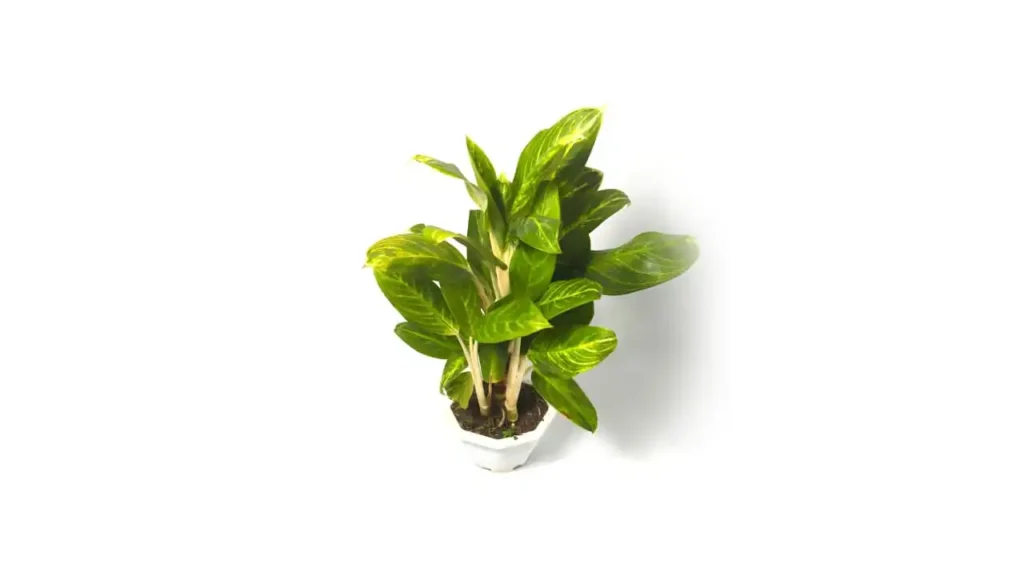
Read Me – Alocasia Sarian: The Ultimate Care And Growing Guide
Caring: Tending to Your Chinese Evergreen
Navigating the care of your Chinese Evergreen isn’t an intricate puzzle; it’s a harmonious dance between your attentiveness and the plant’s needs. With tender loving care and these insightful guidelines, you’ll cultivate a vibrant Chinese Evergreen that graces your environment with verdant sophistication.
Light
Your Chinese Evergreen luxuriates in a subdued, diffused luminosity. It shuns the harshness of direct sunlight, so opt for a locale where the sun’s intensity won’t tarnish its foliage. A space imbued with mellow, filtered luminance suits this amiable plant to perfection.
Watering
Hydrating your Chinese Evergreen demands discernment. Allow the upper stratum of the soil to desiccate before administering moisture anew. Ensure thorough drainage to avert potential water saturation that could jeopardize the root system. Employ water of ambient temperature to maintain an optimal environment for your plant.
Soil and Food
A soil blend with proficient drainage serves as the bedrock of your Chinese Evergreen’s vitality. During its vibrant phases in spring and summer, a diluted, equilibrated fertilizer offers the requisite nourishment. Grant it respite during the frigid months—it’s replenishing its vigor for subsequent growth spurts.
Humidity
Though your Chinese Evergreen tolerates customary indoor humidity, it cherishes sporadic misting, particularly in arid conditions. This regimen sustains its luxuriant visage and preserves the vibrancy of its foliage.
Temperature
Your Chinese Evergreen thrives in ambient temperatures akin to your own comfort zone—ranging from 65°F to 75°F (18°C to 24°C). Shield it from brisk drafts and unmediated thermal sources to ensure its continued well-being.
Pruning
Intermittent pruning can transform your Chinese Evergreen’s aesthetic. Excise any aberrant or elongated growth to stimulate denser, more robust foliage. Exercise caution with sanitary implements to forestall the infiltration of detrimental pests or maladies.
Repotting
Your Chinese Evergreen isn’t overly particular about its abode but relishes some expansion room. Contemplate rehousing it biennially or upon its encroachment beyond its current confines. Opt for a receptacle with optimal drainage and replenished soil to furnish it with a rejuvenated setting.
Adhering to these nuanced directives will engender an oasis where your Chinese Evergreen flourishes, imparting tranquility and organic splendor to your domestic or professional realm. Happy horticulture!
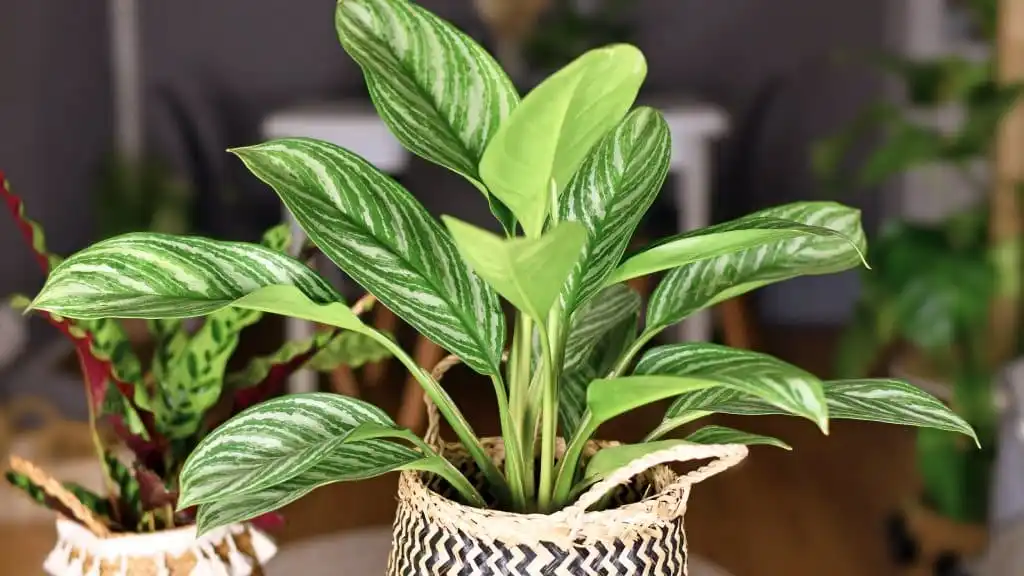
Propagating Chinese Evergreen: An In-depth Manual
Venture into the intricate realm of multiplying Chinese Evergreen flora! Whether your aim is to enrich your indoor sanctuary or disseminate the allure of this botanical marvel, the art of propagation promises gratification and excitement. Here’s your comprehensive roadmap:
Cultivating Through Stem Cuttings:
- Electing the Optimal Cutting: Commence by singling out a robust stem adorned with verdant foliage. Target a segment measuring between 4 to 6 inches, possessing several nodes where verdure sprouts.
- Refining the Cutting: Employ a sanitized pair of shears or a blade to execute a precise severance just beneath a leaf node. Disrobe the basal foliage to unveil these nodes, pivotal for root proliferation.
- Inducing Rooting: Immerse your chosen segment in a receptacle of water, ensuring the nodes remain submerged. Alternatively, embed it directly into dampened earth.
- Crafting a Hospitable Atmosphere: Harbor your segment in an ambient locale with subdued luminosity and elevated humidity. Should you opt for aqueous rooting, monitor its level diligently.
- Replanting Milestone: Post a span of 4-6 weeks, root emergence becomes evident. This signals the moment for repotting into a vessel laden with permeable loam.
Segmenting Your Specimen:
- Preliminary Phase: Gently extricate your Chinese Evergreen from its container, and delicately dislodge residual soil to lay bare its root matrix.
- Executing Segmentation: Employ a keen, sterile blade to bisect the plant into diminutive units. Each fragment should encompass a few shoots and a sturdy root framework.
- Embedding the Segments: Position each fragment in an individual receptacle replete with revitalized earth. Administer a generous irrigation and station them in an ambient environment bathed in diffused luminance.
Pragmatic Propagation Pointers:
- Thermal Comfort: Chinese Evergreen thrives amid thermal warmth and atmospheric moisture during root genesis. A thermal pad or maintaining an ambient temperature can be advantageous.
- Luminance Considerations: Shield your segments from direct solar exposure to avert foliar scorching. They prosper optimally under soft, diffused luminosity.
- Exercise Patience: Propagation, akin to all virtuous endeavors, demands patience. Supervise your segments vigilantly, ensuring their well-being and hydration throughout their developmental journey.
There you have it! Armed with meticulous care and unwavering patience, you can adeptly propagate Chinese Evergreen specimens, ushering in their opulent elegance to any chosen setting. Gardening felicity awaits!
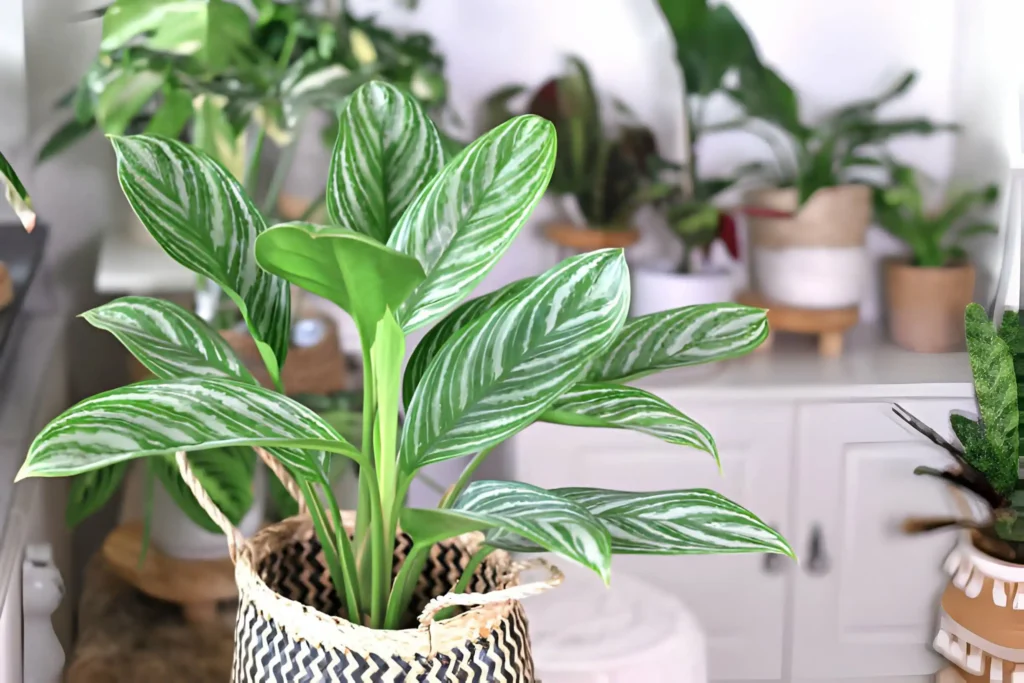
Potting and Repotting: A Comprehensive Guide
Navigating the realm of potting and repotting Chinese Evergreen plants transcends mere routine; it’s a pivotal facet of fostering their vibrancy and well-being. By adopting a meticulous approach, you can curate an idyllic habitat for your Chinese Evergreen, facilitating its exuberant growth. Here’s an intricate guide to achieving this with finesse:
Selecting an Optimal Vessel
Initiate your journey by selecting a receptacle adorned with perforations at its base. These apertures facilitate the egress of surplus moisture, sustaining the vitality of your plant’s root system. Opt for a container slightly more capacious than its current domicile, granting your Chinese Evergreen the liberty to expand its root network.
Curating the Ideal Substrate
Chinese Evergreen exhibits a predilection for a well-aerated substrate that retains moderate moisture without succumbing to saturation. You can either procure a specialized potting amalgam designed for interior flora or concoct a bespoke blend encompassing peat moss, perlite, and compost in equitable proportions. This concoction furnishes the root system with the requisite oxygenation and nourishment for robust growth.
Engaging in the Potting Process
- Enriching the Vessel: Commence by incorporating a stratum of diminutive stones or gravel at the receptacle’s base to augment drainage efficacy.
- Amassing the Medium: Introduce your selected potting amalgam until the receptacle achieves approximately one-third capacity.
- Liberating the Roots: Dislodge your Chinese Evergreen from its extant container, exercising utmost caution to preserve the root integrity.
- Positioning the Plant: Nestle your plant within the novel receptacle, ensuring its placement mirrors its previous orientation.
- Augmenting the Medium: Populate the interstitial spaces surrounding your plant with additional potting medium, exerting gentle pressure to stabilize its position.
- Hydrating the Plant: Administer a copious watering session to your newly transplanted specimen, consolidating the substrate and invigorating the root system.
The Repotting Endeavor
Your Chinese Evergreen may necessitate relocation every couple of years, particularly if it exhibits signs of confinement or diminished vigor. Here’s a blueprint for this transitional phase:
- Dimensional Considerations: Opt for a receptacle exceeding the current one’s dimensions to accommodate the burgeoning root system.
- Iterative Procedure: Recreate the potting process delineated above, ensuring the utilization of pristine potting medium and ample spatial provision.
- Post-Transplantation Care: Following repotting, position your plant in diffused illumination and abstain from fertilization for a fortnight to facilitate acclimatization.
Armed with these nuanced insights, potting and repotting your Chinese Evergreen plants will become an enriching endeavor, elevating your indoor ambiance with verdant allure.
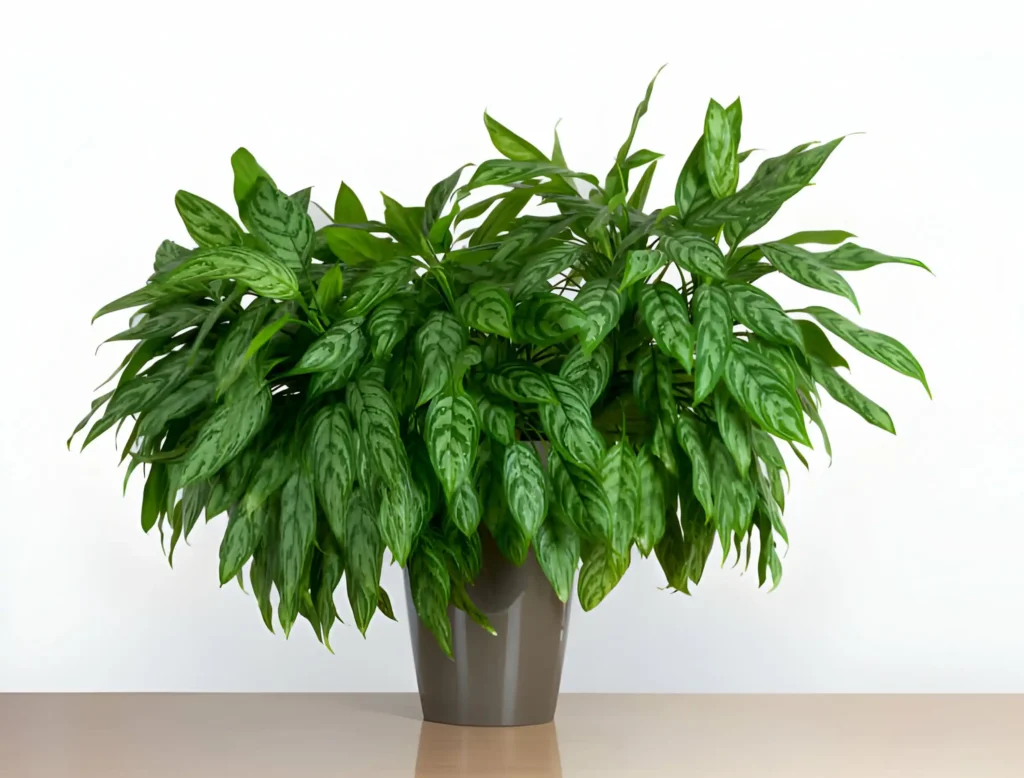
Pests & Diseases: An In-Depth Exploration of Chinese Evergreen’s
The allure of possessing a Chinese Evergreen is undeniable! Its resplendent foliage and vivacious demeanor captivate any beholder. Yet, this botanical wonder isn’t impervious to the myriad nuisances of pests and diseases. Let’s embark on an enlightening journey through the potential adversaries and strategies to combat them.
The Elusive Intruders
Spider Mites:
These diminutive assailants operate with the stealth and agility of plant-based ninjas. Despite their minuscule stature, they have the potential to inflict considerable harm on your Chinese Evergreen, inducing discoloration and leaving intricate web-like imprints. Vigilance is paramount, particularly in arid conditions.
Mealybugs:
Envision minute, downy clusters adhering to your foliage—that’s the hallmark of mealybugs! These voracious sap-consumers can induce yellowing of the leaves and hinder growth. Watch for their characteristic white, cotton-like congregations on both leaves and stems.
Aphids:
While these petite, green or black insects may appear innocuous, they too are sap extractors! Their presence can lead to leaf deformation and curling. It’s advisable to inspect the leaf undersides, a favored haunt of aphids.
The Formidable Maladies
Root Rot:
The age-old quandary of excessive watering! Root rot, a fungal affliction, can transmute your plant’s root system into a gelatinous mass. Initial indicators include wilted and yellowed foliage. To sidestep this peril, ensure your plant isn’t submerged in water and that its substrate facilitates proper drainage.
Leaf Spot:
This fungal malady manifests as ominous, moisture-laden blemishes on your plant’s foliage. Left unaddressed, these lesions can proliferate, causing premature leaf abscission. Adequate ventilation and judicious watering serve as effective deterrents against leaf spot.
Proactive Measures
Routine Surveillance:
Adopt the practice of routinely scrutinizing your Chinese Evergreen. Early detection of anomalies enables timely intervention, averting potential crises.
Holistic Remedies:
For minor infestations, consider concocting eco-friendly solutions. Compounds like neem oil or insecticidal soap offer gentler alternatives, safeguarding both your plant and the ecosystem.
Quarantine:
In instances of suspected infestation or disease, isolate the affected plant. This precautionary measure curtails the spread of contagions, shielding your other botanical companions.
Plant Nurturing:
Bestow upon your Chinese Evergreen the attention it merits—adequate illumination, meticulous hydration, and optimal air circulation. A contented plant invariably thrives, fortifying its natural defenses against potential adversities.
Armed with this insightful guidance, you’re well-prepared to cultivate a flourishing and radiant Chinese Evergreen!
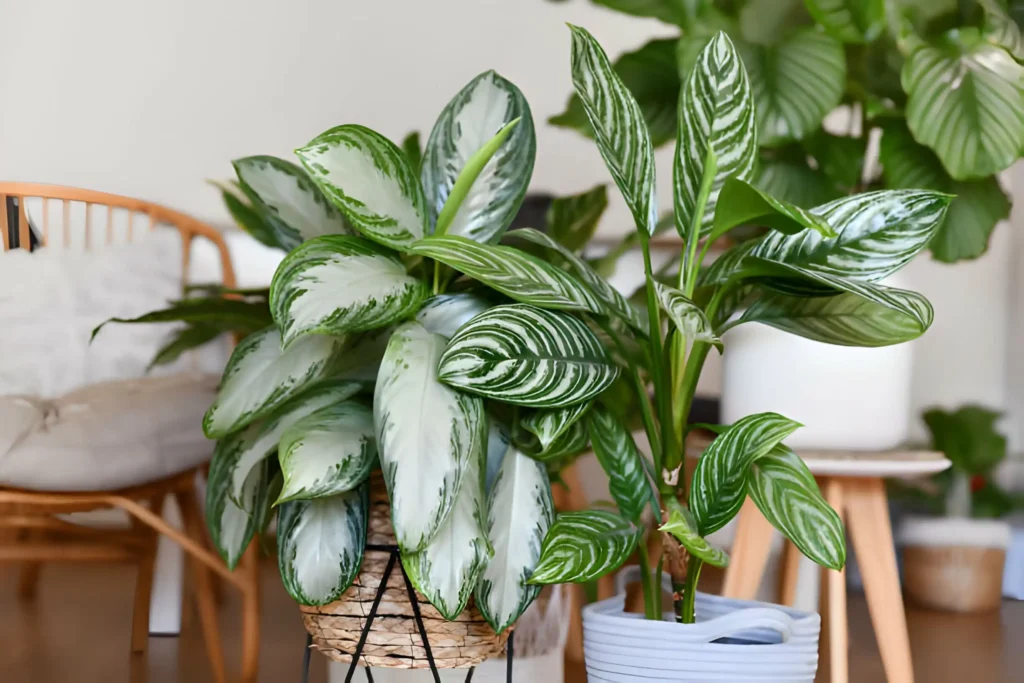
Common Problems: Navigating Its Challenges
Chinese Evergreen, often viewed as an indomitable force of nature, occasionally reveals its vulnerable side. When your Chinese Evergreen starts to exhibit subtle cues of distress, it’s essential to discern these signs and take corrective action promptly.
Yellow Leaves: A Cry for Assistance
The appearance of yellow leaves on your Chinese Evergreen could be likened to a subtle distress signal, hinting at either an overabundance of moisture or an insufficiency of luminosity.
- Soil Assessment: Plunge your finger into the soil, approximately an inch deep. If the sensation is parched, your plant is likely yearning for hydration.
- Illuminate the Surroundings: Consider relocating your plant to a locale where it can bask in more ambient light. However, shield it from the glare of direct sunlight.
Brown Leaf Tips: Indicators of Imbalance
When the leaf tips of your Chinese Evergreen take on a brown hue, it may signify a disparity in humidity levels or an overdose of nutrients.
- Augment the Atmosphere’s Moisture: Introducing a humidifier or indulging your plant with a misting session might invigorate its spirit.
- Moderate the Nutritional Input: If you’ve been generous with fertilizers, it’s time to exercise restraint. Adhere to a balanced fertilizer regimen and heed the label’s guidance.
Lethargic Foliage: Overhydration or Root Maladies
If your Chinese Evergreen’s foliage appears lackluster, it might be grappling with excessive watering or underlying root complications.
- Root Inspection: Delicately extract your plant from its vessel to scrutinize its roots. Dark or mushy roots warrant immediate attention. Prune the afflicted areas and repot the plant in pristine soil.
- Adopt Prudent Watering Practices: Allow the soil to desiccate between watering intervals to avert waterlogged conditions. Adequate drainage remains paramount.
Unwelcome Intruders: Combatting Garden Pests
Beware of uninvited guests! Chinese Evergreens are occasionally besieged by nuisances like spider mites or mealybugs.
- Vigilance Against Infestations: Conduct periodic surveillance for minuscule invaders or silken webbing on your plant.
- Engage in Countermeasures: Should you detect any unwelcome pests, confront them with a gentle concoction of insecticidal soap or neem oil. Adhere to the application directives diligently.
By investing a modicum of effort in diagnosing and addressing these prevalent challenges, your Chinese Evergreen will likely rejuvenate, restoring its verdant allure in a short span!

FAQs: Frequently Asked Questions
Is Chinese Evergreen a low-maintenance plant?
Yes, Chinese Evergreen is renowned for its low-maintenance nature, making it an excellent choice for both beginners and experienced gardeners. This plant thrives in various conditions, tolerating low light and irregular watering. With minimal care, such as occasional watering and indirect light, Chinese Evergreen can flourish and bring greenery to your indoor spaces effortlessly.
How often should I water my Chinese Evergreen?
Watering frequency for Chinese Evergreen depends on various factors like light, humidity, and soil type. Generally, it’s advisable to water your Chinese Evergreen when the top inch of soil feels dry to the touch. Overwatering can lead to root rot, while underwatering can cause the leaves to droop. By monitoring the soil’s moisture level and adjusting your watering schedule accordingly, you can maintain optimal hydration for your plant.
Can Chinese Evergreen tolerate low-light conditions?
Absolutely! Chinese Evergreen is well-known for its adaptability to low-light environments, making it an ideal choice for indoor spaces with limited natural sunlight. While it can survive in low-light conditions, providing some indirect light can help maintain its vibrant foliage. Placing it near a window or using artificial grow lights can enhance its growth and keep its leaves looking lush and healthy.
How do I propagate Chinese Evergreen?
Propagating Chinese Evergreen can be a rewarding experience. The most common methods include stem cuttings and division of mature plants. For stem cuttings, select a healthy stem with at least two leaves and place it in water or directly in moist soil. Ensure the cutting receives indirect light and maintain consistent moisture levels. Division involves separating a mature plant into smaller sections, each with roots attached, and replanting them in individual pots.
What should I do if my Chinese Evergreen leaves turn yellow?
Yellowing leaves on Chinese Evergreen can be a sign of various issues, such as overwatering, inadequate light, or nutrient deficiencies. To address this, assess your watering habits, ensuring the soil is well-drained and not waterlogged. Check the plant’s light exposure to ensure it’s receiving enough indirect light. Additionally, consider fertilizing your plant with a balanced houseplant fertilizer to provide essential nutrients. Adjusting these factors can help revive your plant and restore its vibrant green foliage.
Read Me – Alocasia Jacklyn: The Ultimate Care And Growing Guide

